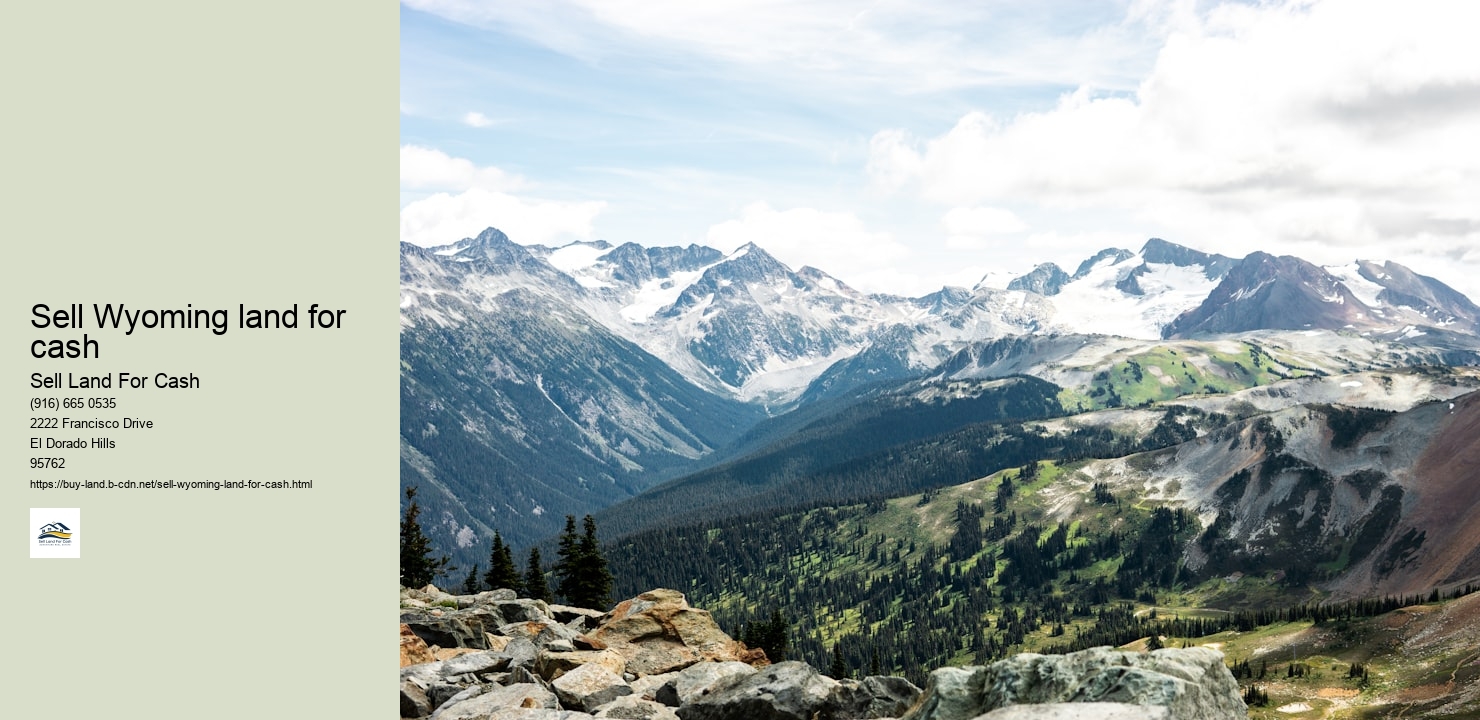

Utilizing Online Platforms When looking to sell Wyoming land, a great way to find interested buyers is by utilizing online platforms. Websites like Zillow, LandWatch, and Land And Farm are popular among individuals searching for land to purchase. By listing your property on these platforms, you can reach a wider audience of potential buyers.
Networking with Real Estate Agents Another effective method for finding buyers interested in purchasing Wyoming land is by networking with real estate agents who specialize in land sales. These professionals have access to a network of clients who may be looking for land in the area. By building relationships with real estate agents, you can increase your chances of finding a buyer quickly.
Attending Real Estate Events Attending real estate events such as trade shows, conferences, and networking mixers can also help you connect with potential buyers interested in purchasing Wyoming land. These events provide an opportunity to showcase your property and network with individuals who are actively seeking land investments.
Engaging with Local Communities Engaging with local communities in Wyoming is another way to find buyers interested in purchasing land. By attending town hall meetings, joining community organizations, and participating in local events, you can connect with individuals who may be interested in buying land in the area. Building relationships within the community can lead to valuable connections and potential buyers.
Advertising through Social Media Social media platforms like Facebook, Instagram, and LinkedIn offer a powerful tool for advertising your Wyoming land for sale. By creating targeted ads and engaging posts showcasing your property's unique features, you can attract the attention of potential buyers who are actively searching for land investments.
Collaborating with Land Investment Groups Collaborating with land investment groups or syndicates is another strategy for finding buyers interested in purchasing Wyoming land. These groups pool resources from multiple investors to acquire properties, making them an ideal target audience for selling your land quickly and efficiently.
Seeking Professional Assistance If you're struggling to find buyers interested in purchasing Wyoming land on your own, seeking professional assistance from a real estate agent or broker specializing in land sales could be beneficial. These professionals have the expertise and resources to market your property effectively and connect you with serious buyers looking for land investments.
Selling Wyoming land can be a profitable venture, but completing a smooth transaction requires careful planning and attention to detail. Here are some key steps to ensure a successful sale:
Research the Market: Before listing your Wyoming land for sale, research the market to understand current trends, pricing, and demand in the area. This will help you set a competitive price and attract potential buyers.
Prepare Your Property: To increase the value of your land and make it more appealing to buyers, consider making improvements such as clearing brush, installing fences or gates, and obtaining any necessary permits or surveys.
Hire a Real Estate Agent: Working with a knowledgeable real estate agent who specializes in Wyoming land sales can streamline the selling process and help you navigate legal requirements and negotiations with potential buyers.
Negotiate Terms: Once you receive an offer on your Wyoming land, carefully review the terms of the agreement and negotiate any changes that are important to you. Be prepared to compromise on certain aspects to keep the transaction moving forward.
Due Diligence: Before closing the sale, conduct due diligence on the buyer to ensure they have financing in place and are able to complete the transaction. Consider hiring a title company or attorney to assist with this process.

Selling land in Wyoming for cash is a process that, while straightforward, requires careful attention to detail and an understanding of both the legal and practical aspects involved.. Wyoming’s vast landscapes and open spaces make it an appealing location for buyers looking for investment opportunities or personal retreats.
Posted by on 2024-09-30

Selling land can often be a complex and drawn-out process, but if you’re looking to quickly sell your Wyoming land for cash, there are several strategies you can employ to expedite the sale.. Known for its vast landscapes and low population density, Wyoming offers unique opportunities and challenges when it comes to real estate transactions.
Posted by on 2024-09-30
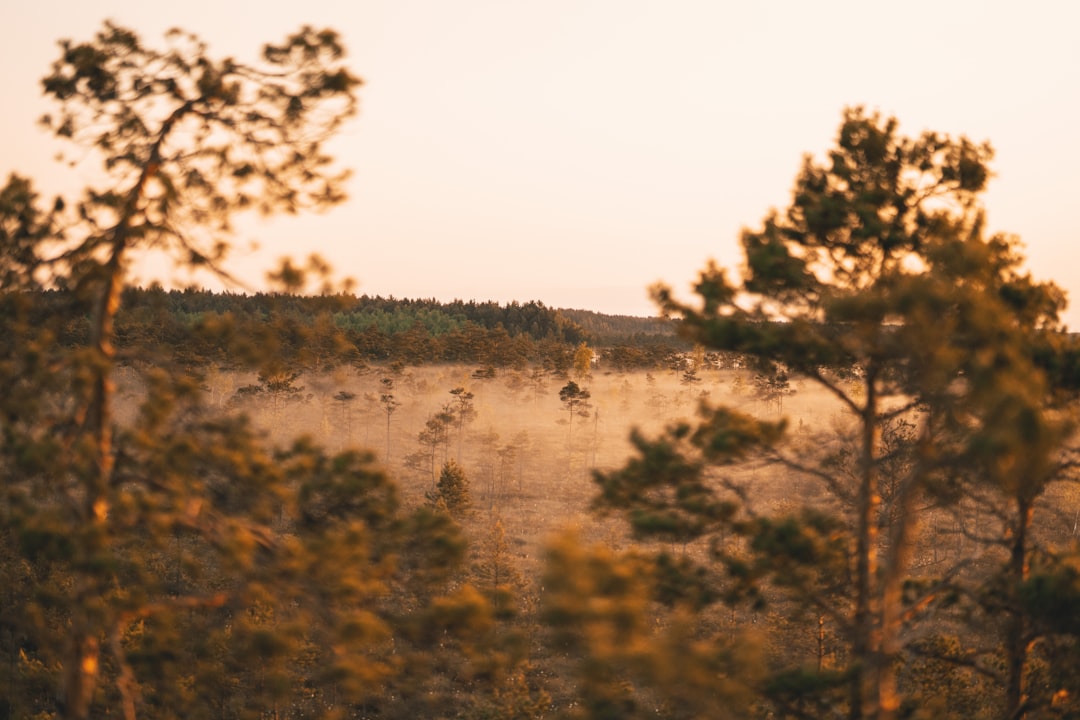
Unlocking the hidden value of Wyoming land and selling it for top cash offers is an intriguing endeavor that combines both the allure of nature and the shrewdness of real estate acumen.. With its vast landscapes, rich history, and sparse population, Wyoming offers a unique opportunity for landowners to maximize their returns by understanding and leveraging the intrinsic qualities of their property.
Posted by on 2024-09-30
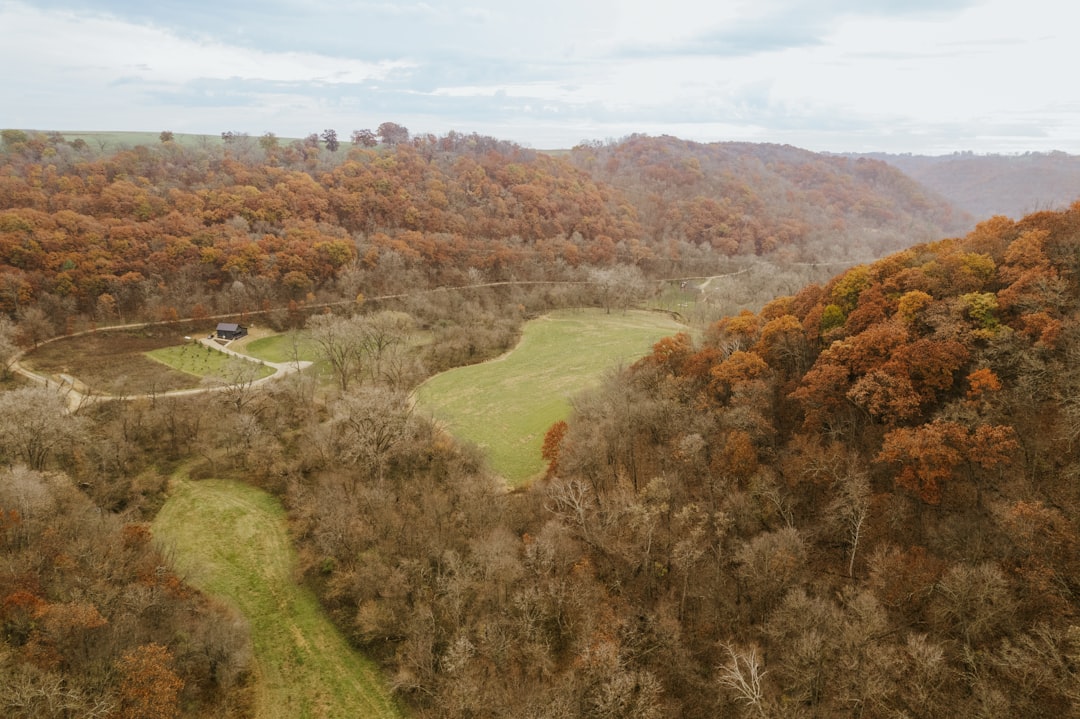
Transforming your Wyoming acres into instant cash might sound like an elusive dream, but with the right approach, it can become a tangible reality.. The vast landscapes of Wyoming offer more than just breathtaking views—they present a plethora of opportunities for enterprising landowners willing to think outside the box.
Posted by on 2024-09-30
When selling Wyoming land, it is important to ensure that all legalities and paperwork are properly handled to avoid any issues in the future.
Title Search and Deed Preparation: Before selling your Wyoming land, it is crucial to conduct a title search to verify ownership and check for any liens or encumbrances on the property. Once the title is clear, you will need to prepare a deed transferring ownership from you to the buyer.
Consult with a Real Estate Attorney: To ensure that all legal requirements are met when selling your Wyoming land, it is advisable to consult with a real estate attorney. They can guide you through the process, review contracts, and help with any legal issues that may arise during the transaction.
Obtain Necessary Permits and Disclosures: Depending on the location and type of property you are selling in Wyoming, you may need to obtain certain permits or provide disclosures to the buyer. It is important to research these requirements beforehand to avoid delays or complications during the sale.
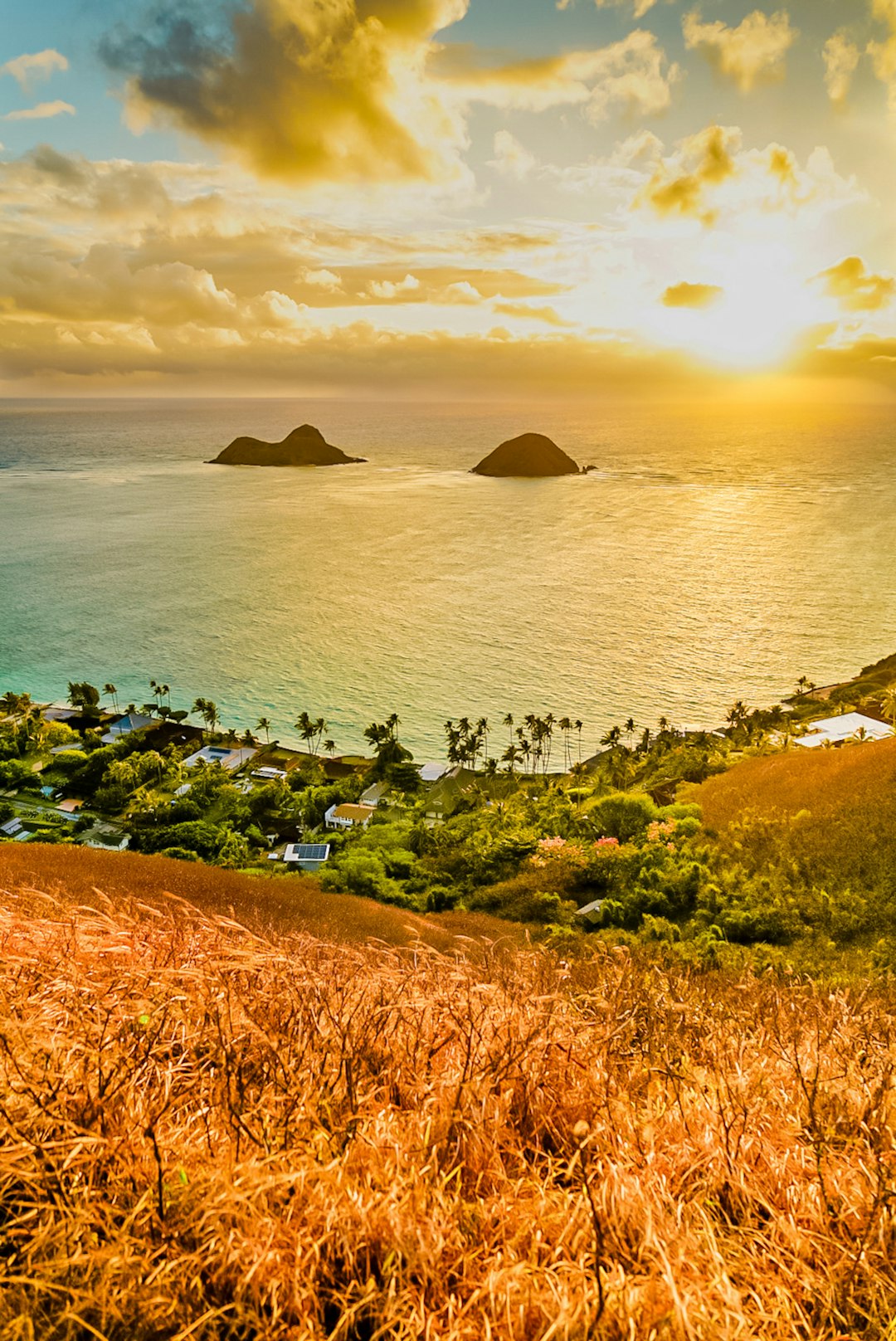
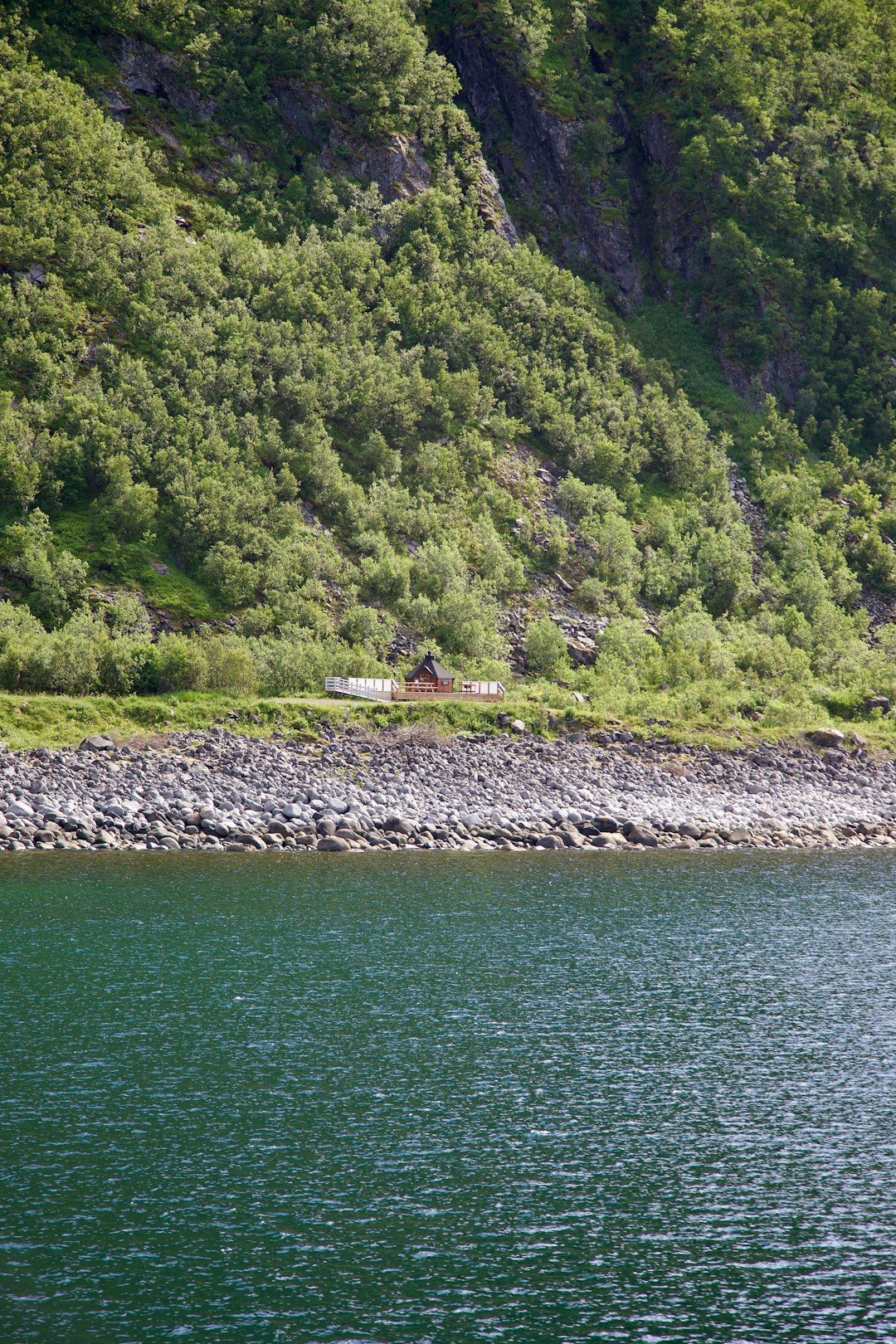
When it comes to selling Wyoming land for cash, strategic planning can make a significant difference in maximizing your profit. By carefully considering various factors and implementing targeted tactics, you can ensure that you get the best possible return on your investment.
Understand Market Trends and Demand Before putting your Wyoming land on the market, take the time to research current market trends and demand in the area. Understanding what buyers are looking for and what prices they are willing to pay can help you set a competitive price for your property. Consider working with a real estate agent who specializes in Wyoming land sales to gain valuable insights into the local market.
Highlight Unique Features and Potential One way to attract buyers and maximize your profit is by highlighting the unique features of your Wyoming land. Whether it's stunning mountain views, access to recreational activities, or potential for development, showcasing these aspects can make your property more appealing to potential buyers. Consider investing in professional photography and marketing materials to effectively communicate the value of your land.
Consider Financing Options Offering financing options can also help you maximize your profit when selling Wyoming land. By providing flexible payment terms or seller financing, you can appeal to a wider range of buyers who may not have immediate access to cash but are interested in purchasing your property. Be sure to consult with a financial advisor or attorney to ensure that any financing agreements are legally sound and protect your interests.
When selling Wyoming land for cash, it is important to consider various factors that can impact the value of the property.
Location plays a significant role in determining the value of Wyoming land when selling for cash. Land located near urban areas or with easy access to amenities such as schools, hospitals, and shopping centers tends to have higher value compared to land in remote or less developed areas.
The size of the land also affects its value when selling for cash. Generally, larger parcels of land are more valuable than smaller ones, especially if they can be subdivided or developed for commercial or residential purposes.
The topography and natural features of the land can also influence its value. Land with desirable features such as mountain views, water access, or fertile soil may command a higher price when sold for cash.
Zoning regulations and restrictions imposed by local authorities can impact the value of Wyoming land when selling for cash. Land that is zoned for residential or commercial use typically has a higher market value compared to land that is restricted to agricultural use.
Market conditions and trends in the real estate industry can also affect the value of Wyoming land when selling for cash. Factors such as supply and demand, interest rates, and economic conditions can all play a role in determining how much a piece of land is worth.
Working with a knowledgeable real estate agent or appraiser can help sellers determine an accurate value for their Wyoming land when selling for cash. These professionals can provide insight into current market conditions and comparable sales data to help sellers set a realistic asking price.
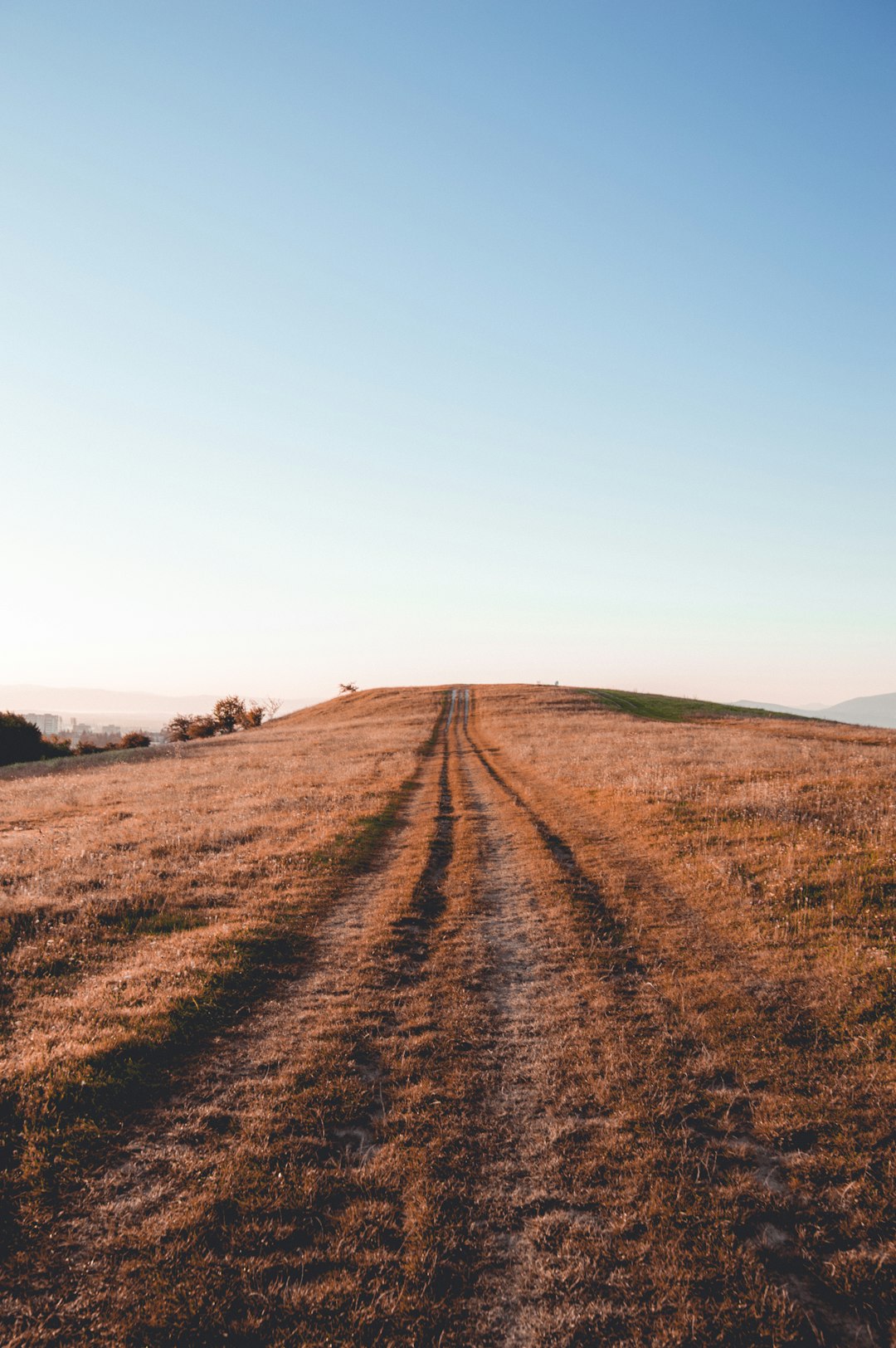
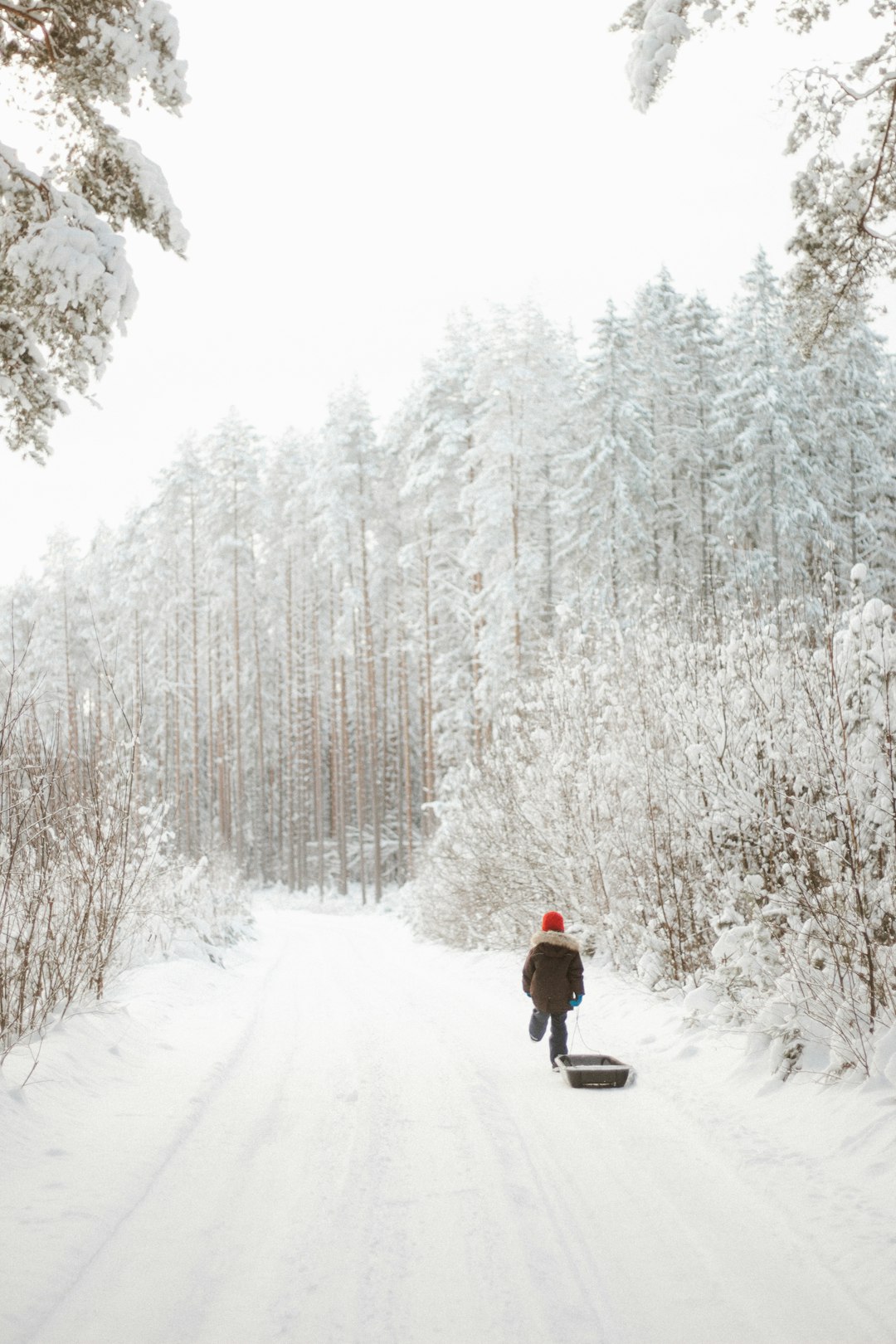
When selling Wyoming land for cash, it is important to consider the potential tax implications that may arise from the transaction.
Capital Gains Tax: One of the main tax implications when selling Wyoming land for cash is capital gains tax. If you have owned the land for more than a year before selling it, you will likely be subject to capital gains tax on any profit made from the sale.
Tax Rate: The tax rate for capital gains depends on your income level and how long you have owned the property. Generally, if you fall into a higher income bracket, you may be subject to a higher capital gains tax rate.
1031 Exchange: One way to potentially defer paying capital gains tax when selling Wyoming land for cash is through a 1031 exchange. This allows you to reinvest the proceeds from the sale into another similar investment property without triggering immediate taxation.
Depreciation Recapture: If you have claimed depreciation deductions on the Wyoming land over the years, you may be required to pay depreciation recapture tax upon its sale. This tax recaptures some of the previously deducted depreciation as ordinary income.
State Taxes: In addition to federal taxes, you may also be subject to state taxes when selling Wyoming land for cash. It is important to research and understand your state's specific tax laws regarding real estate transactions.
When it comes to selling your Wyoming land for cash, there are several important steps you can take to ensure a successful transaction. From pricing your land competitively to marketing it effectively, here are some key strategies to help you sell your property quickly and for the best price.
Research the Market Before listing your Wyoming land for sale, it's crucial to do thorough research on the current market conditions in your area. Look at recent sales of similar properties, assess market trends, and consider factors that may impact the value of your land such as location, access to utilities, and zoning regulations.
Set the Right Price One of the most important factors in selling your Wyoming land quickly is setting the right price. Work with a real estate agent or appraiser to determine a competitive listing price based on market data and comparable sales. Pricing your land too high can deter potential buyers, while pricing it too low could mean leaving money on the table.
Highlight Your Land's Features When marketing your Wyoming land for sale, be sure to highlight its unique features and potential uses. Whether it's stunning mountain views, access to recreational activities like hunting or fishing, or development potential, showcasing what makes your land special can attract more interest from buyers.
Consider Seller Financing Options To make your Wyoming land even more attractive to potential buyers, consider offering seller financing options. This can help buyers who may not qualify for traditional financing secure a loan and make it easier for them to purchase your property.
Work with an Experienced Real Estate Agent Selling land in Wyoming can be complex, so it's important to work with an experienced real estate agent who understands the local market and regulations. An agent can help you navigate the selling process, negotiate offers on your behalf, and ensure a smooth transaction from start to finish.
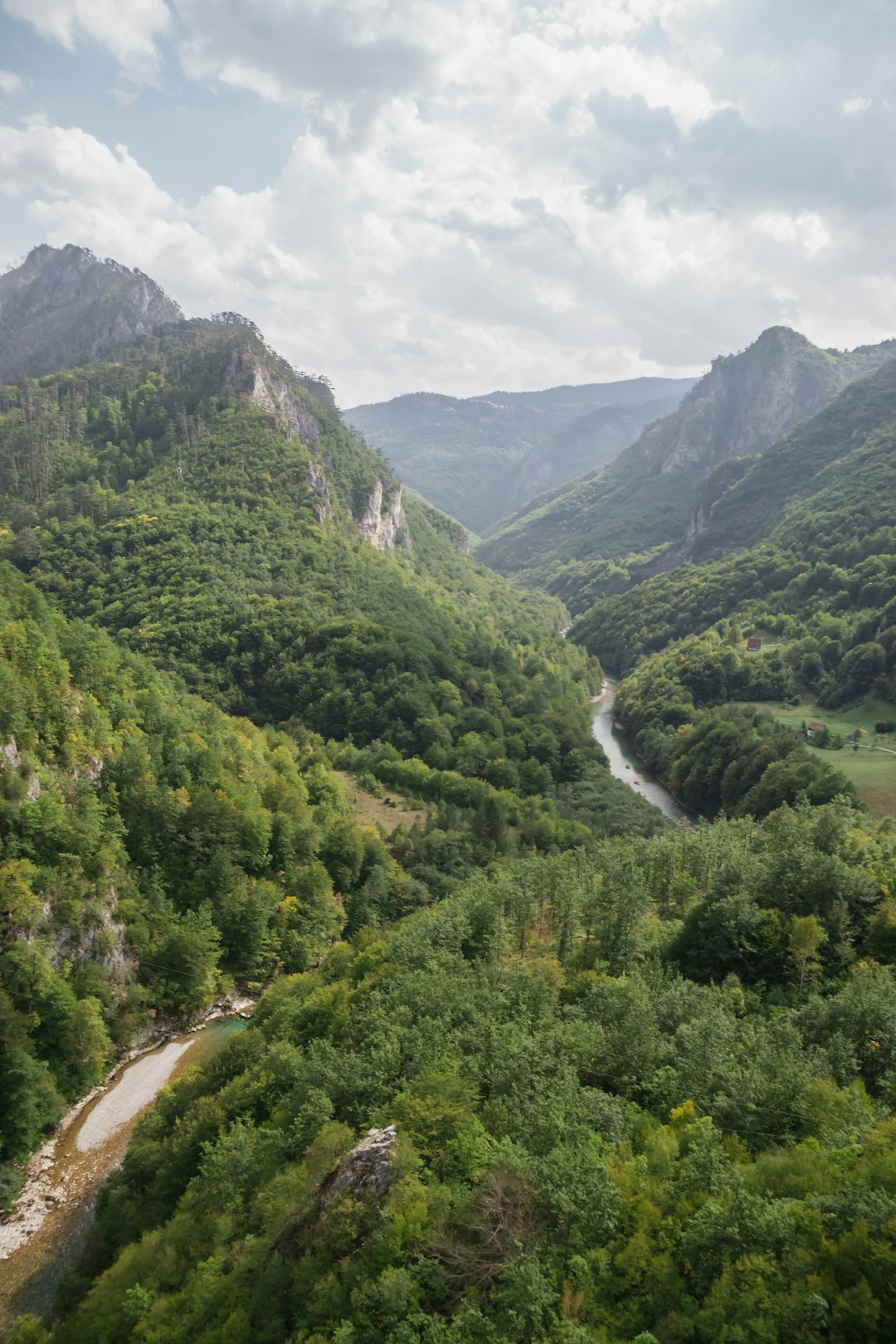
Wyoming (/waɪˈoʊmɪŋ/ wye-OH-ming)[8] is a landlocked state in the Mountain West subregion of the Western United States. It borders Montana to the north and northwest, South Dakota and Nebraska to the east, Idaho to the west, Utah to the southwest, and Colorado to the south. With a population of 576,851 in 2020,[9] Wyoming is the least populous state despite being the 10th largest by area, with the second-lowest population density after Alaska. The state capital and most populous city is Cheyenne, which had a population of 65,132 in 2020.[10]
Wyoming's western half consists mostly of the ranges and rangelands of the Rocky Mountains; its eastern half consists of high-elevation prairie, and is referred to as the High Plains. Wyoming's climate is semi-arid in some parts and continental in others, making it drier and windier overall than other states, with greater temperature extremes. The federal government owns just under half of Wyoming's land, generally protecting it for public use. The state ranks sixth in the amount of land—and fifth in the proportion of its land—that is owned by the federal government.[11] Its federal lands include two national parks (Grand Teton and Yellowstone), two national recreation areas, two national monuments, and several national forests, as well as historic sites, fish hatcheries, and wildlife refuges.
Indigenous peoples inhabited the region for thousands of years. Historic and currently federally recognized tribes include the Arapaho, Crow, Lakota, and Shoshone. Part of the land that is now Wyoming came under American sovereignty via the Louisiana Purchase, part via the Oregon Treaty, and, lastly, via the Mexican Cession. With the opening of the Oregon Trail, the Mormon Trail, and the California Trail, vast numbers of pioneers traveled through parts of the state that had once been traversed mainly by fur trappers, and this spurred the establishment of forts, such as Fort Laramie, that today serve as population centers.[12] The Transcontinental Railroad supplanted the wagon trails in 1867 with a route through southern Wyoming,[13] bringing new settlers and the establishment of founding towns, including the state capital of Cheyenne.[14] On March 27, 1890, Wyoming became the union's 44th state.[1]
Wyoming is known for having a political culture that leans towards libertarian conservatism.[15] The Republican presidential nominee has carried the state in every election since 1968.[16] It is one of the least religious states in the country.[17] Wyoming was the first state to allow women the right to vote (not counting New Jersey, which had allowed it until 1807), and the right to assume elected office, as well as the first state to elect a female governor. In honor of this part of its history, its most common nickname is "The Equality State" and its official state motto is "Equal Rights".[1]
Farming and ranching, and the attendant range wars, feature prominently in the state's history. Wyoming's economy is largely based on tourism and the extraction of minerals such as coal, natural gas, oil, and trona. Its agricultural commodities include barley, hay, livestock, sugar beets, wheat, and wool. Wyoming does not require the beneficial owners of LLCs to be disclosed in the filing, which creates an opportunity for a tax haven. Wyoming levies no individual or corporate income tax and no tax on retirement income.

Several Native American groups originally inhabited the region today known as Wyoming. The Crow, Arapaho, Lakota, and Shoshone were but a few of the original inhabitants European explorers encountered when they first visited the region. What is now southwestern Wyoming was claimed by the Spanish Empire, which extended through the Southwest and Mexico. With Mexican independence in 1821, it was considered part of Alta California. U.S. expansion brought settlers who fought for control. Mexico ceded these territories after its defeat in 1848 in the Mexican–American War.
From the late 18th century, French-Canadian trappers from Québec and Montréal regularly entered the area for trade with the tribes. French toponyms such as Téton and La Ramie are marks of that history.[18]
American John Colter first recorded a description in English of the region in 1807. He was a member of the Lewis and Clark Expedition, which was guided by French Canadian Toussaint Charbonneau and his young Shoshone wife, Sacagawea. At the time, Colter's reports of the Yellowstone area were considered fictional.[19] On a return from Astoria, Robert Stuart and a party of five men discovered South Pass in 1812.[18]
The Oregon Trail later followed that route as emigrants moved to the west coast. In 1850, mountain man Jim Bridger first documented what is now known as Bridger Pass.[20] Bridger also explored Yellowstone, and filed reports on the region that, like Colter's, were largely regarded at the time as tall tales. The Union Pacific Railroad constructed track through Bridger Pass in 1868.[20] It was used as the route for construction of Interstate 80 through the mountains 90 years later.[21]
After the Union Pacific Railroad reached Cheyenne in 1867, population growth was stimulated. The federal government established the Wyoming Territory on July 25, 1868.[22] Lacking significant deposits of gold and silver, unlike mineral-rich Colorado, Wyoming did not have such a population boom. But South Pass City had a short-lived boom after the Carissa Mine began producing gold in 1867.[23] Copper was mined in some areas between the Sierra Madre Mountains and the Snowy Range near Grand Encampment.[24]
Once government-sponsored expeditions to the Yellowstone country began, Colter's and Bridger's descriptions of the region's landscape were confirmed. In 1872, Yellowstone National Park was created as the world's first, to protect this area. Nearly all of the park lies within the northwestern corner of Wyoming.

On December 10, 1869, territorial Governor John Allen Campbell extended the right to vote to women, making Wyoming the first territory to do so, and upon statehood became the first state to grant women's suffrage.[25] Women first served on juries in Wyoming (Laramie in 1870). Wyoming was also a pioneer in welcoming women into electoral politics.[26] It had the first female court bailiff (Mary Atkinson, Laramie, in 1870), and the first female justice of the peace in the country (Esther Hobart Morris, South Pass City, in 1870). In 1924, Wyoming was the first state to elect a female governor, Nellie Tayloe Ross, who took office in January 1925.[27] Due to its civil-rights history, one of Wyoming's state nicknames is "The Equality State", and the official state motto is "Equal Rights".[1]
Wyoming's constitution also included a pioneering article on water rights.[28] Bills for Wyoming Territory's admission to the union were introduced in both the U.S. Senate and U.S. House of Representatives in December 1889. On March 27, 1890, the House passed the bill and President Benjamin Harrison signed Wyoming's statehood bill; Wyoming became the 44th state in the union.[1]
Wyoming was the location of the Johnson County War of 1892, which erupted between competing groups of cattle ranchers. The passage of the Homestead Act led to an influx of small ranchers. A range war broke out when either or both of the groups chose violent conflict over commercial competition in the use of the public land.
The region had acquired the name Wyoming by 1865 when Representative James Mitchell Ashley of Ohio introduced a bill to Congress to provide a "temporary government for the territory of Wyoming". The territory was named after the Wyoming Valley in Pennsylvania. Thomas Campbell wrote his 1809 poem "Gertrude of Wyoming", inspired by the Battle of Wyoming in the American Revolutionary War. The name ultimately derives from the Lenape Munsee word xwé:wamənk ("at the big river flat").[29][30]


Wyoming's climate is generally semi-arid and continental (Köppen climate classification BSk) and is drier and windier in comparison to most of the United States with greater temperature extremes.[31][32] Much of this is due to the topography of the state. Summers in Wyoming are warm with July high temperatures averaging between 80 and 90 °F (27 and 32 °C) in most of the state. With increasing elevation, however, this average drops rapidly with locations above 9,000 feet (2,700 m) averaging around 70 °F (21 °C). Summer nights throughout the state are characterized by a rapid cooldown with even the hottest locations averaging in the 50–60 °F (10–16 °C) range at night. In most of the state, most of the precipitation tends to fall in the late spring and early summer. Winters are cold but are variable with periods of sometimes extreme cold interspersed between generally mild periods, with Chinook winds providing unusually warm temperatures in some locations.
Wyoming is a dry state with much of the land receiving less than 10 inches (250 mm) of rainfall per year. Precipitation depends on elevation with lower areas in the Big Horn Basin averaging 5–8 inches (130–200 mm), making the area nearly a true desert. The lower areas in the North and on the eastern plains typically average around 10–12 inches (250–300 mm), making the climate there semi-arid. Some mountain areas do receive a good amount of precipitation, 20 inches (510 mm) or more, much of it as snow, sometimes 200 inches (510 cm) or more annually. The state's highest recorded temperature is 114 °F (46 °C) at Basin on July 12, 1900, and the lowest recorded temperature is −66 °F (−54 °C) at Riverside on February 9, 1933.
The number of thunderstorm days varies across the state with the southeastern plains of the state having the most days of thunderstorm activity. Thunderstorm activity in the state is highest during the late spring and early summer. The southeastern corner of the state is the most vulnerable part of the state to tornado activity. Moving away from that point and westwards, the incidence of tornadoes drops dramatically with the west part of the state showing little vulnerability. Tornadoes, where they occur, tend to be small and brief, unlike some of those that occur farther east.
| Casper climate: Average maximum and minimum temperatures, and average rainfall. | |||||||||||||
|---|---|---|---|---|---|---|---|---|---|---|---|---|---|
| Month | Jan | Feb | Mar | Apr | May | Jun | Jul | Aug | Sep | Oct | Nov | Dec | Year |
| Average max. temperature °F (°C) | 32 (0) |
37 (3) |
45 (7) |
56 (13) |
66 (19) |
78 (26) |
87 (31) |
85 (29) |
74 (23) |
60 (16) |
44 (7) |
34 (1) |
58 (14) |
| Average min. temperature °F (°C) |
12 (−11) |
16 (−9) |
21 (−6) |
28 (−2) |
37 (3) |
46 (8) |
54 (12) |
51 (11) |
41 (5) |
32 (0) |
21 (−6) |
14 (−10) |
31 (-1) |
| Average rainfall inches (mm) |
0.6 (15.2) |
0.6 (15.2) |
1.0 (25.4) |
1.6 (40.6) |
2.1 (53.3) |
1.5 (38.1) |
1.3 (33.0) |
0.7 (17.8) |
0.9 (22.9) |
1.0 (25.4) |
0.8 (20.3) |
0.7 (17.8) |
12.8 (325.1) |
| Source:[33] | |||||||||||||
| Jackson climate: Average maximum and minimum temperatures, and average rainfall. | |||||||||||||
|---|---|---|---|---|---|---|---|---|---|---|---|---|---|
| Month | Jan | Feb | Mar | Apr | May | Jun | Jul | Aug | Sep | Oct | Nov | Dec | Year |
| Average max. temperature °F (°C) | 24 (−4) |
28 (−2) |
37 (3) |
47 (8) |
58 (14) |
68 (20) |
78 (26) |
77 (25) |
67 (19) |
54 (12) |
37 (3) |
24 (−4) |
49 (9) |
| Average min. temperature °F (°C) |
-1 (−18) |
2 (−17) |
10 (−12) |
21 (−6) |
30 (−1) |
36 (2) |
41 (5) |
38 (3) |
31 (−1) |
22 (−6) |
14 (−10) |
0 (−18) |
20 (-7) |
| Average rainfall inches (mm) |
2.6 (66.0) |
1.9 (48.3) |
1.6 (40.6) |
1.4 (35.6) |
1.9 (48.3) |
1.8 (45.7) |
1.3 (33.0) |
1.3 (33.0) |
1.5 (38.1) |
1.3 (33.0) |
2.3 (58.4) |
2.5 (63.5) |
21.4 (543.6) |
| Source:[34] | |||||||||||||
As specified in the designating legislation for the Territory of Wyoming, Wyoming's borders are lines of latitude 41°N and 45°N, and longitude 104°3'W and 111°3'W (27 and 34 west of the Washington Meridian)—a geodesic quadrangle.[35] Wyoming is one of only three states (the others being Colorado and Utah) to have borders defined by only "straight" lines. Due to surveying inaccuracies during the 19th century, Wyoming's legal border deviates from the true latitude and longitude lines by up to one-half mile (0.80 km) in some spots, especially in the mountainous region along the 45th parallel.[36] Wyoming is bordered on the north by Montana, on the east by South Dakota and Nebraska, on the south by Colorado, on the southwest by Utah, and on the west by Idaho. It is the tenth largest state in the United States in total area, containing 97,814 square miles (253,340 km2) and is made up of 23 counties. From the north border to the south border, it is 276 miles (444 km); and from the east to the west border is 365 miles (587 km) at its south end and 342 miles (550 km) at the north end.


The Great Plains meet the Rocky Mountains in Wyoming. The state is a great plateau broken by many mountain ranges. Surface elevations range from the summit of Gannett Peak in the Wind River Mountain Range, at 13,804 feet (4,207 m), to the Belle Fourche River valley in the state's northeast corner, at 3,125 feet (952 m). In the northwest are the Absaroka, Owl Creek, Gros Ventre, Wind River, and the Teton ranges. In the north central are the Big Horn Mountains; in the northeast, the Black Hills; and in the southern region the Laramie, Snowy, and Sierra Madre ranges.
The Snowy Range in the south-central part of the state is an extension of the Colorado Rockies both in geology and in appearance. The Wind River Range in the west central part of the state is remote and includes more than 40 mountain peaks in excess of 13,000 ft (4,000 m) tall in addition to Gannett Peak, the highest peak in the state. The Bighorn Mountains in the north-central portion are somewhat isolated from the bulk of the Rocky Mountains.
The Teton Range in the northwest extends for 50 miles (80 km), part of which is included in Grand Teton National Park. The park includes the Grand Teton, the second-highest peak in the state.
The Continental Divide spans north–south across the central portion of the state. Rivers east of the divide drain into the Missouri River Basin and eventually the Gulf of Mexico. They are the North Platte, Wind, Bighorn, and Yellowstone rivers. The Snake River in northwest Wyoming eventually drains into the Columbia River and the Pacific Ocean, as does the Green River through the Colorado River Basin.
The Continental Divide forks in the south-central part of the state in an area known as the Great Divide Basin where water that precipitates onto or flows into it cannot reach an ocean—it all sinks into the soil and eventually evaporates.
Several rivers begin in or flow through the state, including the Yellowstone River, Bighorn River, Green River, and the Snake River.
Much of Wyoming is covered with large basins containing different eco-regions, from shrublands to smaller patches of desert.[37] Regions of the state classified as basins contain everything from large geologic formations to sand dunes and vast unpopulated spaces.[38] Basin landscapes are typically at lower elevations and include rolling hills, valleys, mesas, terraces and other rugged terrain, but also include natural springs as well as rivers and artificial reservoirs.[39] They have common plant species such as various subspecies of sagebrush, juniper and grasses such as wheatgrass, but basins are known for their diversity of plant and animal species.[37]
Wyoming has 32 named islands; the majority are in Jackson Lake and Yellowstone Lake, within Yellowstone National Park in the northwest portion of the state. The Green River in the southwest also contains a number of islands.

The state of Wyoming has 23 counties.
| Rank | County | Population | Rank | County | Population |
|---|---|---|---|---|---|
| 1 | Laramie | 100,512 | 13 | Converse | 13,751 |
| 2 | Natrona | 79,955 | 14 | Goshen | 12,498 |
| 3 | Campbell | 47,026 | 15 | Big Horn | 11,521 |
| 4 | Sweetwater | 42,272 | 16 | Sublette | 8,728 |
| 5 | Fremont | 39,234 | 17 | Platte | 8,605 |
| 6 | Albany | 37,066 | 18 | Johnson | 8,447 |
| 7 | Sheridan | 30,921 | 19 | Washakie | 7,685 |
| 8 | Park | 29,624 | 20 | Crook | 7,181 |
| 9 | Teton | 23,331 | 21 | Weston | 6,838 |
| 10 | Uinta | 20,450 | 22 | Hot Springs | 4,621 |
| 11 | Lincoln | 19,581 | 23 | Niobrara | 2,467 |
| 12 | Carbon | 14,537 | Wyoming Total | 576,851 | |

Wyoming license plates have a number on the left that indicates the county where the vehicle is registered, ranked by an earlier census.[40] Specifically, the numbers are representative of the property values of the counties in 1930.[41] The county license plate numbers are:
| License Plate Prefix |
County | License Plate Prefix |
County | License Plate Prefix |
County |
|---|---|---|---|---|---|
| 1 | Natrona | 9 | Big Horn | 17 | Campbell |
| 2 | Laramie | 10 | Fremont | 18 | Crook |
| 3 | Sheridan | 11 | Park | 19 | Uinta |
| 4 | Sweetwater | 12 | Lincoln | 20 | Washakie |
| 5 | Albany | 13 | Converse | 21 | Weston |
| 6 | Carbon | 14 | Niobrara | 22 | Teton |
| 7 | Goshen | 15 | Hot Springs | 23 | Sublette |
| 8 | Platte | 16 | Johnson |




The State of Wyoming has 99 incorporated municipalities.
| Rank | City | County | Population |
|---|---|---|---|
| 1 | Cheyenne | Laramie | 65,132 |
| 2 | Casper | Natrona | 59,038 |
| 3 | Gillette | Campbell | 33,403 |
| 4 | Laramie | Albany | 31,407 |
| 5 | Rock Springs | Sweetwater | 23,526 |
| 6 | Sheridan | Sheridan | 18,737 |
| 7 | Green River | Sweetwater | 11,825 |
| 8 | Evanston | Uinta | 11,747 |
| 9 | Jackson | Teton | 10,760 |
| 10 | Riverton | Fremont | 10,682 |
| 11 | Cody | Park | 10,028 |
| 12 | Rawlins | Carbon | 8,221 |
| 13 | Lander | Fremont | 7,546 |
| 14 | Powell | Park | 6,419 |
| 15 | Douglas | Converse | 6,386 |
| 16 | Torrington | Goshen | 6,119 |
In 2020, 51.1% of Wyomingites lived in one of the 12 most populous Wyoming municipalities.
The United States Census Bureau has defined two metropolitan statistical areas (MSA) and eight micropolitan statistical areas (MiSA) for the state. In 2020, 31.3% of Wyomingites lived in either of the metropolitan statistical areas, and 80.4% lived in either a metropolitan or a micropolitan area.
| Census Area | County | Population |
|---|---|---|
| Cheyenne | Laramie | 100,512 |
| Casper | Natrona | 79,955 |
| Gillette | Campbell | 47,026 |
| Rock Springs | Sweetwater | 42,272 |
| Riverton | Fremont | 39,234 |
| Laramie | Albany | 37,066 |
| Jackson | Teton County, Wyoming | 23,331 |
| Teton County, Idaho | 11,630 | |
| Total | 34,961 | |
| Sheridan | Sheridan | 30,233 |
| Cody | Park | 29,624 |
| Evanston | Uinta County, Wyoming | 20,450 |
| Rich County, Utah | 2,510 | |
| Total | 22,960 |
| Census | Pop. | Note | %± |
|---|---|---|---|
| 1870 | 9,118 | — | |
| 1880 | 20,789 | 128.0% | |
| 1890 | 62,555 | 200.9% | |
| 1900 | 92,531 | 47.9% | |
| 1910 | 145,965 | 57.7% | |
| 1920 | 194,402 | 33.2% | |
| 1930 | 225,565 | 16.0% | |
| 1940 | 250,742 | 11.2% | |
| 1950 | 290,529 | 15.9% | |
| 1960 | 330,066 | 13.6% | |
| 1970 | 332,416 | 0.7% | |
| 1980 | 469,557 | 41.3% | |
| 1990 | 453,588 | −3.4% | |
| 2000 | 493,782 | 8.9% | |
| 2010 | 563,626 | 14.1% | |
| 2020 | 576,851 | 2.3% | |
| 2023 (est.) | 584,057 | [42] | 1.2% |
| Sources: 1910–2020[43] | |||

The 2020 United States census counted 576,851 people living in Wyoming.[9] The center of population of Wyoming is in Natrona County.[44][45] Sparsely populated, Wyoming is the least populous state of the United States. Wyoming has the second-lowest population density in the country (behind Alaska) and is the sparsest-populated of the 48 contiguous states. It is one of only two states with a population smaller than that of the nation's capital; the only other state with this distinction is Vermont.
According to HUD's 2022 Annual Homeless Assessment Report, there were an estimated 648 homeless people in Wyoming.[46][47]
According to the 2020 census, the population's racial composition was 84.7% white (81.4% non-Hispanic white), 2.4% American Indian and Alaska Native, 0.9% Black or African American, 0.9% Asian American, and 0.1% Native Hawaiian or Pacific Islander, 3.5% from some other race, and 7.5% from two or more races.[48] As of 2011, 24.9% of Wyoming's population younger than age 1 were minorities.[49] According to data from the American Community Survey, as of 2018, Wyoming was the only U.S. state where African Americans earn a higher median income than white workers.[50]

As of 2015, Wyoming had an estimated population of 586,107, which was an increase of 1,954, or 0.29%, from the prior year and an increase of 22,481, or 3.99%, since the 2010 census. This includes a natural increase since the last census of 12,165 (33,704 births minus 21,539 deaths) and an increase from net migration of 4,035 into the state. Immigration resulted in a net increase of 2,264 and migration within the country produced a net increase of 1,771. In 2004, the foreign-born population was 11,000 (2.2%). In 2005, total births in Wyoming were 7,231 (birth rate of 14.04 per thousand).[51]
According to the 2000 census, the largest ancestry groups in Wyoming were: German (26.0%), English (16.0%), Irish (13.3%), Norwegian (4.3%), and Swedish (3.5%).[52][failed verification]
In 2018, The top countries of origin for Wyoming's immigrants were Mexico, China, Germany, England and Canada.[53]

| Non-Hispanic White 60–70% 70–80% 80–90% 90%+ |
Note: Births in table do not add up, because Hispanics are counted both by their ethnicity and by their race, giving a higher overall number.
| Race | 2013[54] | 2014[55] | 2015[56] | 2016[57] | 2017[58] | 2018[59] | 2019[60] | 2020[61] | 2021[62] | 2022[63] |
|---|---|---|---|---|---|---|---|---|---|---|
| White: | 7,090 (92.7%) | 7,178 (93.2%) | 7,217 (92.9%) | ... | ... | ... | ... | ... | ... | ... |
| > Non-Hispanic White | 6,136 (80.3%) | 6,258 (81.3%) | 6,196 (79.8%) | 5,763 (78.0%) | 5,426 (78.6%) | 5,078 (77.4%) | 5,158 (78.6%) | 4,762 (77.7%) | 4,882 (78.3%) | 4,622 (76.4%) |
| Native American | 305 (4.0%) | 294 (3.8%) | 294 (3.8%) | 200 (2.7%) | 206 (3.0%) | 219 (3.3%) | 198 (3.0%) | 176 (2.9%) | 179 (2.9%) | 185 (3.1%) |
| Asian | 124 (1.6%) | 108 (1.4%) | 135 (1.7%) | 100 (1.3%) | 79 (1.1%) | 72 (1.1%) | 73 (1.1%) | 58 (0.9%) | 67 (1.1%) | 64 (1.1%) |
| Black | 125 (1.6%) | 116 (1.5%) | 119 (1.5%) | 63 (0.9%) | 45 (0.7%) | 57 (0.9%) | 61 (0.9%) | 55 (0.9%) | 48 (0.8%) | 46 (0.8%) |
| Hispanic (of any race) | 926 (12.1%) | 895 (11.6%) | 963 (12.4%) | 973 (13.2%) | 892 (12.9%) | 851 (13.0%) | 839 (12.8%) | 818 (13.3%) | 749 (12.0%) | 835 (13.8%) |
| Total Wyoming | 7,644 (100%) | 7,696 (100%) | 7,765 (100%) | 7,386 (100%) | 6,903 (100%) | 6,562 (100%) | 6,565 (100%) | 6,128 (100%) | 6,237 (100%) | 6,049 (100%) |
In 2010, 93.39% (474,343) of Wyomingites over age 5 spoke English as their primary language; 4.47% (22,722) spoke Spanish, 0.35% (1,771) spoke German, and 0.28% (1,434) spoke French. Other common non-English languages included Algonquian (0.18%), Russian (0.10%), Tagalog, and Greek (both 0.09%).[64]
In 2007, the American Community Survey reported 6.2% (30,419) of Wyoming's population over five spoke a language other than English at home. Of those, 68.1% were able to speak English very well, 16.0% spoke English well, 10.9% did not speak English well, and 5.0% did not speak English at all.[65]
Surveys have consistently ranked Wyoming among the most irreligious states.[17][66] According to the 2020 American Values Atlas survey, Wyoming was the least religious state in the country.[66]
Religious self-identification, Public Religion Research Institute's 2020 American Values Atlas survey.[67]
In 2020, the Public Religion Research Institute determined that about 55% of Wyoming's adult population was Christian, primarily evangelical and mainline Protestant, Roman Catholic, and Mormon.[66] The Public Religion Research Institute survey documented a decrease in religiosity from a 2014 separate Pew Research Center study;[68] according to the Public Religion Research Institute, the irreligious made up 40% of the state population by 2020. According to a 2013 Gallup poll, Wyomingites' religious affiliations were 49% Protestant, 23% nonreligious or other, 18% Catholic, 9% Latter-day Saint (Mormons), and less than 1% Jewish.[69]
A 2010 Association of Religion Data Archives (ARDA) report recognized as Wyoming's largest denominations the Church of Jesus Christ of Latter-day Saints (LDS Church), with 62,804 (11%); the Catholic Church, with 61,222 (10.8%); and the Southern Baptist Convention, with 15,812 (2.8%). The report counted 59,247 evangelical Protestants (10.5%), 36,539 mainline Protestants (6.5%), 785 Eastern Orthodox Christians; 281 Black Protestants; 65,000 adhering to other traditions; and 340,552 claiming no religious tradition.[70] In 2020, ARDA reported the state's largest individual denominations as the following: the Catholic Church (69,500); the LDS Church (67,729); and the Southern Baptist Convention (11,082). Non-denominational Protestants were 23,410 in number.[71]
According to ARDA's 2020 report, the Roman Catholics had an adherence rate of 120.48 per 1,000 people, Mormons 117.41 per 1,000 people, and Southern Baptists 19.21 per 1,000 people. Non-denominational Protestants had an adherence rate of 40.58 per 1,000 people; these trends reflected the separate 2014 Pew study's varying attendance at religious services. In 2014, 38% visited a religious service at least once a week, 28% once or twice a month, and 32% seldom/never.[68] A 2018 research article by the National Christian Foundation cited non-churchgoing Christians nationwide did not attend religious services often through practicing the faith in other ways, not finding a house of worship they liked, disliking sermons and feeling unwelcomed, and logistics.[72]

According to a United States Bureau of Economic Analysis report, Wyoming's gross state product in 2022 was $49.8 billion.[73] As of 2014, the population was growing slightly with the most growth in tourist-oriented areas, such as Teton County. Boom conditions in neighboring states, such as North Dakota, were drawing energy workers away. About half of Wyoming's counties showed population loss.[74] The state makes active efforts through Wyoming Grown, an internet-based recruitment program, to find jobs for young people educated in Wyoming who have emigrated but may wish to return.[75]
The mineral-extraction industry and travel and tourism sector are the main drivers of Wyoming's economy.[76] The federal government owns about 42.3% of its landmass, while the state controls 6%.[76] The total taxable value of mining production in Wyoming in 2007 was over $14.5 billion. In 2018, tourism industry contributed approximately $3.8 billion in spending from domestic and international visitors.[76]
In 2002, more than six million people visited Wyoming's national parks and monuments. Wyoming's main tourist attractions include Grand Teton National Park, Yellowstone National Park, Devils Tower National Monument, Independence Rock and Fossil Butte National Monument. Yellowstone, established in 1872 as the world's first national park, attracts over three million visitors each year.
Historically, agriculture has been an important component of Wyoming's economy. Its overall importance to the economy has waned, but it is still an essential part of Wyoming's culture and lifestyle. The main agricultural commodities Wyoming produces include livestock (beef), hay, sugar beets, grain (wheat and barley), and wool. More than 91% of Wyoming's land is classified as rural.
Wyoming is the home of only a handful of companies with a regional or national presence. Taco John's and Sierra Trading Post, both in Cheyenne, are privately held. Cloud Peak Energy in Gillette and U.S. Energy Corp. (NASDAQ: USEG) in Riverton are Wyoming's only publicly traded companies.
Various initiatives have been put in place and legislation adopted to encourage the use of blockchain technology and cryptocurrencies in the state.[77] Tyler Lindholm, a former state legislator, claimed that 500 member-owned limited liability companies built on blockchain had been established and that 17,000 businesses with "crypto" in their name registered by 2023.These included the blockchain platforms Cardano and Tacen.[78]


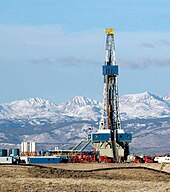
Wyoming's mineral commodities include coal, natural gas, coalbed methane, crude oil, uranium, and trona.
Wyoming produced 277 million short tons (251.29 million metric tons) of coal in 2019, a 9% drop from 2018.[81] Wyoming's coal production peaked in 2008, when 514 million short tons (466.3 million metric tons) were produced.[81] Wyoming has a reserve of 68.7 billion tons (62.3 billion metric tons) of coal. Major coal areas include the Powder River Basin and the Green River Basin. CBM is methane gas extracted from coal bed seams and coalbed methane extraction (CBM) boomed in the mid-1990s.[citation needed] There has been substantial CBM production in the Powder River Basin.[citation needed] In 2002, the CBM production yield was 327.5 billion cubic feet (9.3 km3).[citation needed] In 2016, Wyoming produced 1.77 trillion cubic feet (50.0 billion m3) of natural gas, ranking the state ranked 6th nationwide in natural gas production.[82]
Wyoming produced 53.4 million barrels (8.49×106 m3) of crude oil in 2007, ranking fifth nationwide in oil production.[83]
Because of its geography and altitude, the potential for wind power in Wyoming is one of the highest of any U.S. state. The Chokecherry and Sierra Madre Wind Energy Project is the largest commercial wind generation facility under development in North America.[84] Carbon County is home to the largest proposed wind farm in the nation. Construction plans have been halted because of proposed new taxes on wind power energy production.[85]
The Kelsey Lake Diamond Mine in Colorado, less than 1,000 feet (300 m) from the Wyoming border, produced gem-quality diamonds for several years.[citation needed] The Wyoming craton, which hosts the kimberlite volcanic pipes that were mined, underlies most of Wyoming. Wyoming possesses the world's largest known reserve of trona,[86] a mineral used in manufacturing glass, paper, soaps, baking soda, water softeners, and pharmaceuticals. In 2008, Wyoming produced 46 million short tons (41.7 million metric tons) of trona, 25% of the world's production.[86] Although uranium mining in Wyoming is much less active than in previous decades, a sharp rise in uranium prices in 2007 spurred new interest in prospecting and mining.[87] In 2024, the uranium industry in the state experienced a significant resurgence due to a sharp increase in uranium prices.[88] Rare earth metals are also among Wyoming's mineral commodities.[89]
Unlike most other states, Wyoming levies no individual or corporate income tax. It also assesses no tax on retirement income earned and received from another state. Wyoming has a state sales tax of 4%. Counties have the option to collect an additional 1% tax for general revenue and a 1% tax for specific purposes, if approved by voters. Food for human consumption is not subject to sales tax.[90] A county lodging tax varies from 2% to 5%. The state collects a use tax of 5% on items purchased elsewhere and brought into Wyoming. All property tax is based on the property's assessed value; Wyoming's Department of Revenue's Ad Valorem Tax Division supports, trains, and guides local government agencies in the uniform assessment, valuation and taxation of locally assessed property. "Assessed value" means taxable value; "taxable value" means a percentage of the fair market value of property in a particular class. Statutes limit property tax increases. For county revenue, the property tax rate cannot exceed 12 mills (or 1.2%) of assessed value. For cities and towns, the rate is limited to eight mills (0.8%). With very few exceptions, state law limits the property tax rate for all governmental purposes.
Personal property held for personal use is tax-exempt. Inventory held for resale, pollution control equipment, cash, accounts receivable, stocks and bonds are also exempt. Other exemptions include property used for religious, educational, charitable, fraternal, benevolent and government purposes and improvements for handicapped access. Mine lands, underground mining equipment, and oil and gas extraction equipment are exempt from property tax, but companies must pay a gross products tax on minerals and a severance tax on mineral production.[91][92]
Wyoming does not collect inheritance taxes. There is limited estate tax related to federal estate tax collection.
In 2008, the Tax Foundation reported that Wyoming had the most "business-friendly" tax climate of any U.S. state.[93] Wyoming state and local governments in fiscal year 2007 collected $2.242 billion in taxes, levies, and royalties from the oil and gas industry. The state's mineral industry, including oil, gas, trona, and coal, provided $1.3 billion in property taxes from 2006 mineral production.[83] As of 2017, Wyoming receives more federal tax dollars as a percentage of state general revenue than any state except Montana.[94]
As of 2016, Wyoming does not require the beneficial owners of LLCs to be disclosed in the filing, which creates an opportunity for a tax haven, according to Clark Stith of Clark Stith & Associates.[95] If fact, Wyoming was the first state to enact a statute authorizing the creation of LLCs.[96]
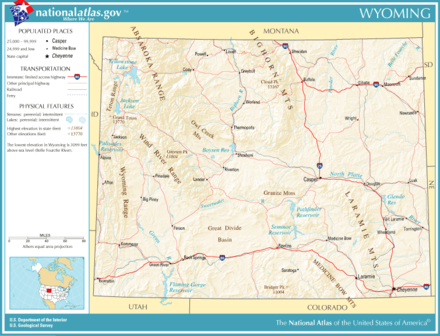
Wyoming's largest airport is Jackson Hole Airport, with more than 500 employees.[97] Three interstate highways and 13 U.S. highways pass through Wyoming. The Wyoming state highway system also serves the state.
Interstate 25 enters Wyoming south of Cheyenne and runs north, intersecting Interstate 80 immediately west of Cheyenne. It passes through Casper and ends at Interstate 90, near Buffalo. Interstate 80 crosses the Utah border west of Evanston and runs east through the southern third of the state, passing through Cheyenne before entering Nebraska near Pine Bluffs. Interstate 90 comes into Wyoming near Parkman and cuts through the northeastern part of the state. It serves Gillette and enters South Dakota east of Sundance.
U.S. Routes 14, 16, and the eastern section of U.S. 20 have their western terminus at the eastern entrance to Yellowstone National Park and pass through Cody. U.S. 14 runs eastward before joining I-90 at Gillette. U.S. 14 then follows I-90 to the South Dakota border. U.S. 16 and 20 split off of U.S. 14 at Greybull and U.S. 16 turns east at Worland while U.S. 20 continues south Shoshoni. U.S. Route 287 runs from Fort Collins, Colorado, to Laramie, Wyoming, through a pass between the Laramie Mountains and the Medicine Bow Mountains, then merges with US 30 and I-80 until it reaches Rawlins, where it continues north, passing Lander. Outside of Moran, U.S. 287 is part of a large interchange with U.S. Highways 26, 191, and 89, before continuing north to Yellowstone's southern entrance. U.S. 287 continues north of Yellowstone, but the park separates the two sections.
Other U.S. highways that pass through Wyoming are 18, 26, 30, 85, 87, 89, 189, 191, 212, and 287.
Wyoming is one of only two states (the other is South Dakota) in the 48 contiguous states not served by Amtrak.[98] It was once served by Amtrak's San Francisco Zephyr and Pioneer lines.[99] While no passenger trains roll through Wyoming today, intercity buses continue to connect residents across the state. Intercity bus carriers in the state include Express Arrow, Greyhound Lines, and Jefferson Lines.[100][101][102]
| Local transit map |
|---|
Local Transit Systems (Only systems with fixed-route services are shown) |

The Eastern Shoshone and Northern Arapaho tribes share the Wind River Indian Reservation in central western Wyoming, near Lander. The reservation is home to 2,500 Eastern Shoshone and 5,000 Northern Arapaho.[103]
Chief Washakie established the reservation in 1868[104] as the result of negotiations with the federal government in the Fort Bridger Treaty,[105] but the federal government forced the Northern Arapaho onto the Shoshone reservation in 1876 after it failed to provide a promised separate reservation.[105]
Today the Wind River Indian Reservation is jointly owned, with each tribe having a 50% interest in the land, water, and other natural resources.[106] It is a sovereign, self-governed land with two independent governing bodies: the Eastern Shoshone Tribe and the Northern Arapaho Tribe. Until 2014, the Shoshone Business Council and Northern Arapaho Business Council met jointly as the Joint Business Council to decide matters that affect both tribes.[104] Six elected council members from each tribe served on the joint council.
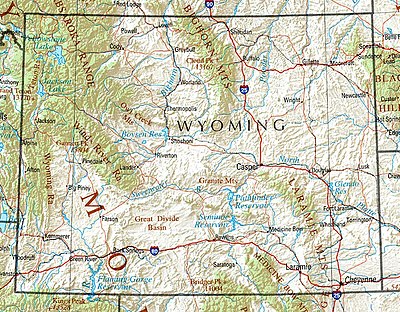
The federal government owns nearly half of Wyoming's land (about 30,099,430 acres (121,808.1 km2)); the state owns another 3,864,800 acres (15,640 km2).[11] Most of it is administered by the Bureau of Land Management and U.S. Forest Service in numerous national forests and a national grassland, not to mention vast swaths of "public" land and an air force base near Cheyenne.

There are also areas managed by the National Park Service and agencies such as the U.S. Fish and Wildlife Service.
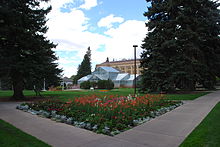
The state superintendent of public instruction, an elected state official, directs public education. The State Board of Education, a nine-member board appointed by the governor, sets educational policy. The constitution prohibits the state from establishing curriculum and textbook selections; these are the prerogative of local school boards. The Wyoming School for the Deaf was the only in-state school dedicated to supporting deaf students before it closed in the summer of 2000.[108]
Wyoming has a public four-year institution, the University of Wyoming in Laramie, and a private four-year college, Wyoming Catholic College, in Lander. There are also seven two-year community colleges.
Before the passing of a new law in 2006, Wyoming had hosted unaccredited institutions, many of them suspected diploma mills.[109] The 2006 law requires unaccredited institutions to make one of three choices: move out of Wyoming, close down, or apply for accreditation. The Oregon State Office of Degree Authorization predicted in 2007 that in a few years the problem of diploma mills in Wyoming might be resolved.[110]
Wyoming's media market consists of 16 broadcast TV stations, radio stations and dozens of small to medium-sized newspapers.[111][112][113] There are also a few small independent news sources such as the nonprofit news site Wyofile.com[114] and Oil City News.[115]

Wyoming's Constitution established three branches of government: the executive, legislative, and judicial branches. The state legislature comprises a House of Representatives with 60 members and a Senate with 30 members. The executive branch is headed by the governor and includes a secretary of state, auditor, treasurer, and superintendent of public instruction. As Wyoming does not have a lieutenant governor, the secretary of state is first in the line of succession.
Wyoming's sparse population warrants the state only one at-large seat in the U.S. House of Representatives, and hence only three votes in the Electoral College.
The Wyoming State Liquor Association is the state's sole legal wholesale distributor of spirits, making it an alcoholic beverage control state. With the exception of wine, state law prohibits the purchase of alcoholic beverages for resale from any other source.[116]
Wyoming's highest court is the Supreme Court of Wyoming, with five justices presiding over appeals from the state's lower courts. Wyoming is unusual in that it does not have an intermediate appellate court, like most states. This is largely attributable to the state's population and correspondingly lower caseload. Appeals from the state district courts go directly to the Wyoming Supreme Court. Wyoming also has state circuit courts (formerly county courts), of limited jurisdiction, which handle certain types of cases, such as civil claims with lower dollar amounts, misdemeanor criminal offenses, and felony arraignments. Circuit court judges also commonly hear small claims cases as well.
Before 1972, Wyoming judges were selected by popular vote on a nonpartisan ballot. This earlier system was criticized by the state bar which called for the adoption of the Missouri Plan, a system designed to balance judiciary independence with judiciary accountability. In 1972, an amendment to Article 5 of the Wyoming Constitution, which incorporated a modified version of the plan, was adopted by the voters. Since the adoption of the amendment, all state court judges in Wyoming are nominated by the Judicial Nominating Commission and appointed by the Governor. They are then subject to a retention vote by the electorate one year after appointment.[117]
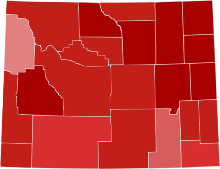
| Party | Number of voters | Percentage | |
|---|---|---|---|
| Republican | 187,574 | 80.77% | |
| Democratic | 25,827 | 11.12% | |
| No party affiliation | 17,084 | 7.36% | |
| Libertarian | 1,148 | 0.49% | |
| Constitution | 381 | 0.16% | |
| Other/No labels | 208 | 0.09% | |
| Total | 232,222 | 100.00% | |
Wyoming's political history defies easy classification. The state was the first to grant women the right to vote and to elect a woman governor.[119] On December 10, 1869, John Allen Campbell, the first Governor of the Wyoming Territory, approved the first law in United States history explicitly granting women the right to vote. This day was later commemorated as Wyoming Day.[119] On November 5, 1889, voters approved the first constitution in the world granting full voting rights to women.[119]
While the state elected notable Democrats to federal office in the 1960s and 1970s, politics have become decidedly more conservative since the 1980s as the Republican Party came to dominate the state's congressional delegation. Today, Wyoming is represented in Washington by its two Senators, John Barrasso and Cynthia Lummis, and its one member of the House of Representatives, Congresswoman Harriet Hageman. All three are Republicans; a Democrat has not represented Wyoming in the Senate since 1977 or in the House since 1978. The state has not voted for a Democrat for president since 1964, one of only eight times since statehood. In the 2004 presidential election, George W. Bush won his second-largest victory, with 69% of the vote. Former Vice President Dick Cheney is a Wyoming resident and represented the state in Congress from 1979 to 1989.
The last time a Democrat won a statewide election in Wyoming was in 2006, when Democratic governor Dave Freudenthal was re-elected to a second term by a wide margin, winning every county in the state. For 19 of Wyoming's 23 counties, 2006 marked the last time that they voted for the Democratic nominee in a statewide race. Of the remaining 4, Sweetwater County last voted Democratic in the 2008 U.S. House race and Laramie County last voted Democratic in the 2014 Superintendent of Public Instruction race, leaving Teton and Albany as the only counties that Democrats are able to win. Teton, which is composed of affluent resort communities, is reliably Democratic, except in Republican landslides like the 2022 gubernatorial election; Albany, which contains the college town of Laramie, is more competitive.
Republicans are dominant at the state level. They have held a majority in the state senate continuously since 1936 and in the state house since 1964, though Democrats held the governorship for all but eight years between 1975 and 2011. Uniquely, Wyoming elected Democrat Nellie Tayloe Ross as the first woman in United States history to serve as state governor. She served from 1925 to 1927, winning a special election after her husband, William Bradford Ross, unexpectedly died a little more than a year into his term.[120]
Wyoming retains the death penalty. Authorized methods of execution include the gas chamber.[121]
Due to its sparse population, Wyoming lacks any major professional sports teams; the Gillette Mustangs, an indoor football team based in Gillette that began play in 2021 prior to their departure from the city in 2023, were previously the only professional team in the state. However, the Wyoming Cowboys and Cowgirls—particularly the football and basketball teams—are quite popular; their stadiums in Laramie are about 7,200 feet (2,200 m) above sea level, the highest in NCAA Division I. The Wyoming High School Activities Association also sponsors twelve sports and there are three junior ice hockey teams, all of which are members of the NA3HL. Casper has hosted the College National Finals Rodeo since 2001.
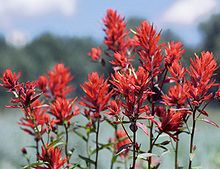
List of all Wyoming state symbols:[1]
... according to Wyoming's Economic Analysis Division
This effort has taken the form of an Internet-based recruitment program called Wyoming Grown. Young Wyomingites who have left the state sign up on the program's website and quickly receive a call from a recruiter who helps link them to work here.
{{cite web}}: CS1 maint: url-status (link)
Selling through an agent can save time and provide expertise but comes with commission fees. Selling independently might save money but requires more effort on your part.
Start by gathering all necessary documents, such as the deed, recent surveys, and any permits. This helps in verifying ownership and understanding property boundaries.
Avoid overpricing your property, neglecting necessary paperwork preparation, skipping due diligence on buyer credibility, and inadequate marketing efforts.
Selling your property could have capital gains tax implications. Consulting with a tax professional is recommended to understand potential liabilities.